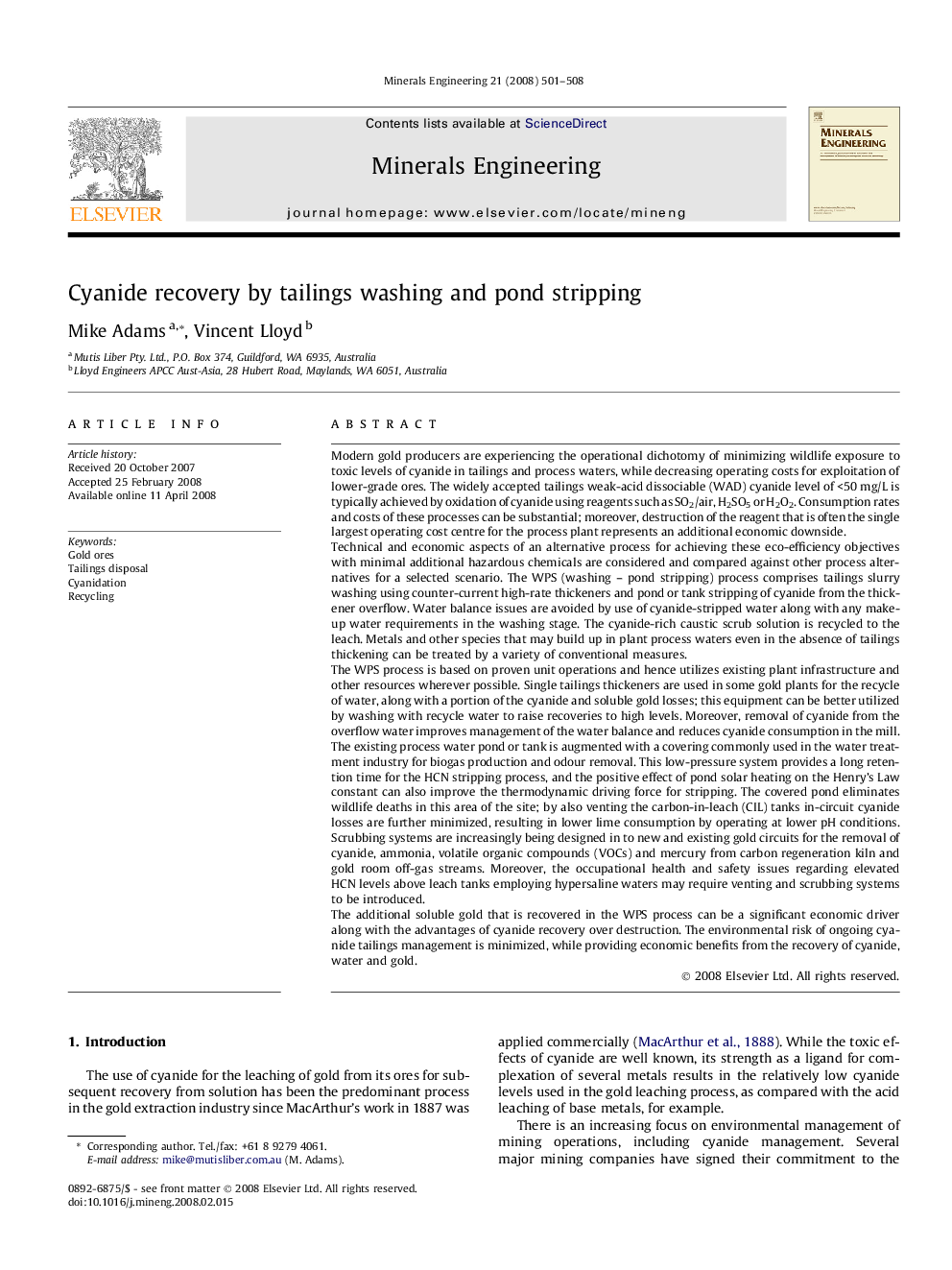| Article ID | Journal | Published Year | Pages | File Type |
|---|---|---|---|---|
| 234322 | Minerals Engineering | 2008 | 8 Pages |
Modern gold producers are experiencing the operational dichotomy of minimizing wildlife exposure to toxic levels of cyanide in tailings and process waters, while decreasing operating costs for exploitation of lower-grade ores. The widely accepted tailings weak-acid dissociable (WAD) cyanide level of <50 mg/L is typically achieved by oxidation of cyanide using reagents such as SO2/air, H2SO5 or H2O2. Consumption rates and costs of these processes can be substantial; moreover, destruction of the reagent that is often the single largest operating cost centre for the process plant represents an additional economic downside.Technical and economic aspects of an alternative process for achieving these eco-efficiency objectives with minimal additional hazardous chemicals are considered and compared against other process alternatives for a selected scenario. The WPS (washing – pond stripping) process comprises tailings slurry washing using counter-current high-rate thickeners and pond or tank stripping of cyanide from the thickener overflow. Water balance issues are avoided by use of cyanide-stripped water along with any make-up water requirements in the washing stage. The cyanide-rich caustic scrub solution is recycled to the leach. Metals and other species that may build up in plant process waters even in the absence of tailings thickening can be treated by a variety of conventional measures.The WPS process is based on proven unit operations and hence utilizes existing plant infrastructure and other resources wherever possible. Single tailings thickeners are used in some gold plants for the recycle of water, along with a portion of the cyanide and soluble gold losses; this equipment can be better utilized by washing with recycle water to raise recoveries to high levels. Moreover, removal of cyanide from the overflow water improves management of the water balance and reduces cyanide consumption in the mill.The existing process water pond or tank is augmented with a covering commonly used in the water treatment industry for biogas production and odour removal. This low-pressure system provides a long retention time for the HCN stripping process, and the positive effect of pond solar heating on the Henry’s Law constant can also improve the thermodynamic driving force for stripping. The covered pond eliminates wildlife deaths in this area of the site; by also venting the carbon-in-leach (CIL) tanks in-circuit cyanide losses are further minimized, resulting in lower lime consumption by operating at lower pH conditions. Scrubbing systems are increasingly being designed in to new and existing gold circuits for the removal of cyanide, ammonia, volatile organic compounds (VOCs) and mercury from carbon regeneration kiln and gold room off-gas streams. Moreover, the occupational health and safety issues regarding elevated HCN levels above leach tanks employing hypersaline waters may require venting and scrubbing systems to be introduced.The additional soluble gold that is recovered in the WPS process can be a significant economic driver along with the advantages of cyanide recovery over destruction. The environmental risk of ongoing cyanide tailings management is minimized, while providing economic benefits from the recovery of cyanide, water and gold.
